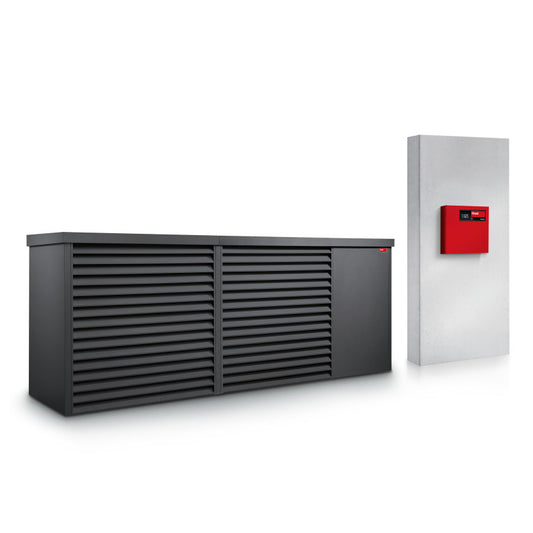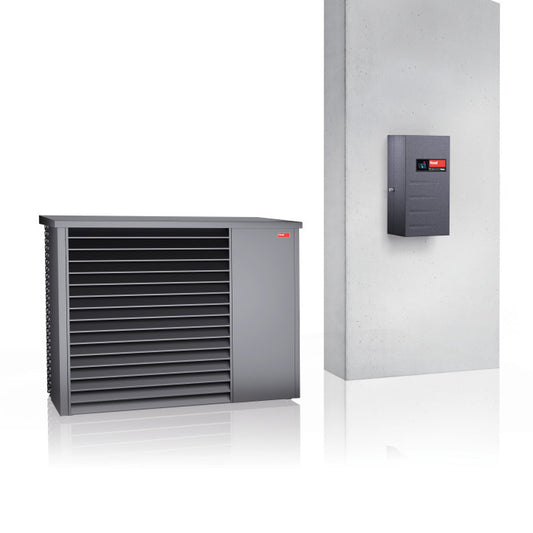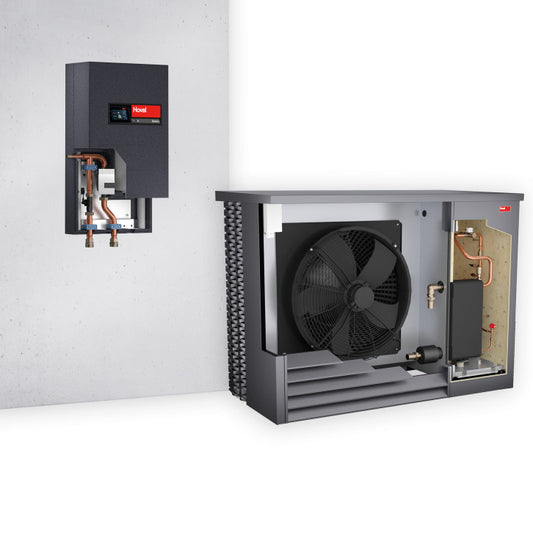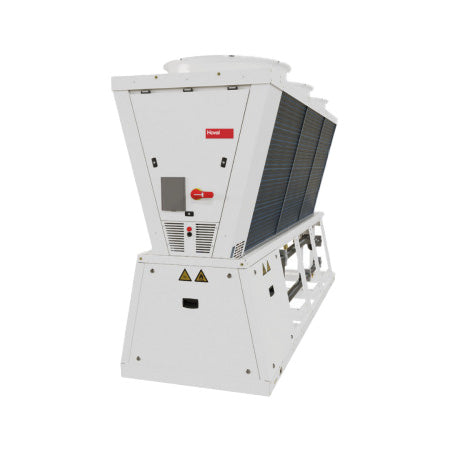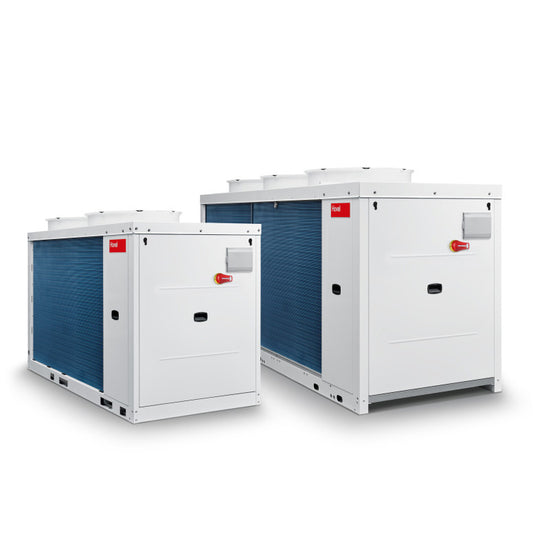We're here to assist you in all Hoval Heat Pump enquiries
Frequently Asked Hoval Heat Pump Questions
What is special about the Hoval Belaria fit & pro models?
The Belaria fit and Belaria pro lines are Hoval’s flagship air/water heat pumps designed for high efficiency and flexibility. The Belaria fit units can be cascaded (up to 16 units) for high output in large buildings, or used alone. Belaria pro offers monoblock designs, high flow temperatures (up to around 70°C), and strong performance for heating, cooling, and domestic hot water.
How do Hoval heat pumps perform in cold weather?
Hoval’s Belaria fit WLP for instance, operates reliably down to -20°C ambient temperature, while still providing high hot water output (up to 75°C). This gives confidence in winter operation in colder climates. Moreover, these units use inverter technology to modulate output, which helps maintain efficiency even in partial load or colder conditions such as the dreaded UK winter months!
What refrigerants and environmental credentials do Hoval heat pumps have?
Some of the newer Hoval Belaria range uses natural refrigerants like R290, which have very low Global Warming Potential (GWP). This aligns them with tighter environmental standards and helps future-proof installations against regulatory changes and helps the UK reach its net-zero goals. Additionally, high SCOP and COP values are achieved via full DC inverter systems, efficient evaporator coil design, and features like hydrophilic coatings to reduce defrost-downtime.
What is a heat pump, and how does an air/water heat pump work?
A heat pump extracts heat from external sources (such as the outdoor air) and uses electricity to move that heat into the building (for heating) or reverse the process for cooling. An air-to-water heat pump warms water that circulates through radiators, underfloor heating, or a domestic hot water cylinder. Because it moves heat rather than generating it by burning fuel, it can deliver several units of heat for each unit of energy used, resulting in high efficiency.
What is the significance of flow temperature, and why do some installations need up to ~70°C?
Flow temperature refers to how hot the water leaving the heat pump is. Higher flow temperatures (around the 70°C mark) are important in renovations or buildings with existing high-temperature radiators where replacing all emitters is impractical. Heat pumps that can achieve those temperatures while maintaining efficiency allow easier retrofit of older systems without needing complete radiator replacement. Hoval’s Belaria pro is one such example capable of supplying ~70°C.
What about noise levels and installation considerations?
There's no getting away from the fact that Heat pump units make noise, primarily from the outdoor fan and compressor, but modern designs can be relatively quiet thanks to larger heat exchangers, acoustically optimised fan design, and careful placement. For example, the Belaria pro 24 model has a sound power level of around 58 dB(A) (sound pressure drops with distance), making it reasonably low noise for its class. It’s important to install on a firm base, ensure access for maintenance, provide good airflow, and consider local regulations or planning requirements around noise.


